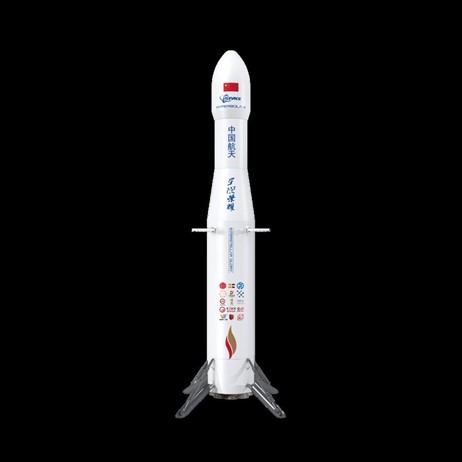At a remote site in China’s Gobi Desert, at the Jiuquan Satellite Launch Center (中国酒泉卫 星发射中心), a Hyperbola-2 rocket successfully entered suborbital space on November 2. The test of the methalox engine and its landing capabilities was hailed as a significant achievement toward Beijing’s space program goal of developing reusable medium-lift rocket technology. The country’s space industry startups that contribute to the Military-Civilian Fusion program are closely linked to the government in Beijing. Xi Jinping and the CCP are striving to replicate the success of American companies such as SpaceX but devoid of the corporate competition found in the United States.
China has effectively grown its commercial space industry under tight state control. Unlike the US space program’s public-private partnership, on paper China’s “private” space startups and its state-owned enterprises (SOE’s) exist alongside each other in a highly synergistic relationship with the government. In reality, the “private” companies typically fill niche requirements in specialized technologies due to limited budgets, while the SOE’s have generous state backing.
Since China entered the domain with its 1992 launch of the Shenzhou (Divine Craft), it has proven to be an emerging “innovation power”, according to David Lin and Katherine Kurata of the Jamestown Foundation. Although Chinese spaceports and other launch centers are controlled by the military with priority to military missions, the country is also reshaping the future landscape of commercial space operations and leadership.
The November launch marked a strategic change in the global space race. “Yet amidst an increasingly congested orbital environment, it is clear that the future trajectory of space exploration hinges not solely on innovation itself, but specifically on the capacity for nations to effectively combine government direction with commercial dynamism,” says Lin and Kurata. The US and China are in a race to balance public and private sector contributions to become the future “point of the spear” in space. US private firms, such as Space X, Blue Origin, and the Artemis program are reviving public interest in space and pioneering reusable rocket technology at great cost savings. NASA says that they must be built upon to ensure America’s continuing leadership. These are commercial ventures.
Beijing’s 2014 Document 60 policy is reshaping how the public and private sector work together in China. The CCP leadership is setting ambitious goals and included them in the State Council’s White Papers on Space Activities, the 2015-2025 National Medium-to-Long-Term Civilian Space Infrastructure Development Plan, and the 2019 Industry Catalog Encouraging Foreign Investment, according to Lin and Kurata. China recognizes space as a “strategic emerging industry.” It’s Space Information Corridor and the Beidou Satellite Navigation System are creating new opportunities for the commercial sector. Starting in 2019, however, companies were required to obtain permits from the People’s Liberation Army to access launch sites.
The Chinese model calls for differentiated competition. Beijing wants to attract private space companies to encourage innovation and financial investment, but within strict state-set rules in keeping with Xi Jinping’s 2017 Military-Civilian Fusion agenda that coordinates construction of space infrastructure that meets both military and civilian needs. Many of the “private” firms are run by former military officials or have other intricate governmental ties.
“In the United States, NASA pioneers new frontiers while the Pentagon cultivates symbiotic partnerships with private contractors and startups. Although heavily government-reliant, this ecosystem enables visionary pursuits. In contrast, behind China’s rhetoric of military-civil fusion lies a tangled web of public and private cooperation activated only when mutual interests converge. Rather than operating autonomously as disruptive innovators, China’s private space firms mostly act as an extension of state interests,” says Lin and Korata. China excels at a rigid implementation of its space program while the US is more agile and innovative. Analysts in Washington suggest that too often the West overlooks it effectiveness and the linkage between China’s military and civilian sectors.
The Department of Defense views China’s civilian space program from a different perspective than Beijing. Washington recently published its annual “Military and Security Developments Involving China” report that provides a review of China’s military developments, including the space domain. The Pentagon analyzes China’s rapid expansion of its nuclear weapons program calling Beijing’s military buildup the biggest and fastest of any country since WWII, and possibly the fastest in human history. China is not only doubling the number of its nuclear warheads by 2030 but also increasing their accuracy and effectiveness.
China’s 2nd Artillery Rocket Force (responsible for nuclear weapons operations) maintains several thousand miles of underground tunnels which potentially could be used to hide nuclear weapons. The stakes are immense. Supremacy in space, as stated by Xi Jinping, calls for his country to reach “commanding heights” and establish itself as the foremost “space power” by 2045. The West cannot overlook that Xi Jinping’s vision is for China to be supreme in space as part of its “national rejuvenation.” Its commercial space program cannot be disengaged from its military ambitions. China’s dominance in space encompasses cutting edge technologies and calls for unmatched weapons deployment, according to the Pentagon. The launch of the Soviet Union’s Sputnik challenged the world order in 1957. China’s Military-Civilian Fusion program may portend a much greater rivalry between the United States and China; one with global consequences for humanity.
Daria Novak served in the U.S. State Dept.
Photo: China Space Program
